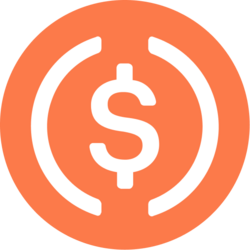Marketplace insurance plans are health insurance policies available to individuals and families through a health insurance marketplace or exchange. Marketplace plans might also be referred to as Obamacare plans or Affordable Care Act (ACA) plans.
There’s no income limit for marketplace insurance, but there are income limits for marketplace insurance subsidies that can help make that insurance more affordable.
What are marketplace insurance subsidies?
Marketplace insurance subsidies can significantly reduce what you pay for a marketplace insurance plan:
The different subsidies each have their own income limits and other eligibility requirements.
What is the income limit for the marketplace premium tax credit?
Broadly speaking, you’re eligible for a premium tax credit if your household income is between 100% and 400% of the federal poverty level (FPL). There are non-income-related eligibility requirements, too.
For an individual in the contiguous U.S., that’s between $15,650 and $62,600 per year in 2025. For a family of four in the contiguous United States, the range between 100% and 400% of the FPL would be $32,150 to $128,600 per year. (Alaska and Hawaii have their own slightly higher income limits.)
🤓Nerdy Tip
The American Rescue Plan Act of 2021 created “enhanced” premium tax credit subsidies starting in 2021. The enhanced subsidies are more generous and make more people eligible for subsidies based on income.
Under the enhanced subsidies, eligible higher-income households can qualify for tax credits that reduce what they spend on premiums to no more than 8.5% of household income, even if their income is above 400% of the FPL.
Enhanced subsidies were initially set to expire after 2022, but Congress extended them through 2025. Unless Congress extends them again, enhanced subsidies will sunset at the end of tax year 2025.
The maximum possible premium tax credit — available to those with the lowest qualifying income — is equal to the premium for the second-lowest-cost Silver plan available to you through the marketplace. If you qualify, but your income is too high for that maximum level, the subsidy gets smaller on a sliding scale according to income.
What is the income limit for marketplace cost-sharing reductions?
People who qualify for the premium tax credit and have household income up to 250% of the FPL can qualify for marketplace cost-sharing reductions. These cost-sharing reductions can decrease the copays, coinsurance, deductibles and maximum out-of-pocket costs you owe with a Silver plan.
For an individual in the contiguous U.S., 250% of the FPL is $39,125 per year, for example. For a family of four, it’s $80,375 per year. (Alaska and Hawaii have their own slightly higher income limits.)
People with lower household incomes qualify for the largest cost-sharing reductions. Like the premium tax credit, cost-sharing reductions get smaller for people with higher household income.
|
100% up to 150% of the FPL |
|
|
Greater than 150% up to 200% of the FPL |
|
|
Greater than 200% up to 250% of the FPL |
Cost-sharing reductions are available only with Silver plans. Plans at other metal levels, such as Bronze or Gold, aren’t eligible for cost-sharing reductions.
(The Silver restriction is only for cost-sharing reductions — so if you choose a plan with a different metal level, you might qualify for premium tax credits but not cost-sharing reductions.)
What if my income is too low for marketplace insurance?
If you make less than 100% of the FPL, your income is too low to qualify for marketplace insurance subsidies — both the premium tax credit and the cost-sharing reductions.
Having income too low for subsidies doesn’t mean you’re not allowed to buy marketplace insurance — but the cost of unsubsidized plans might be unaffordable.
In most states, people with income too low for marketplace insurance subsidies might qualify for Medicaid based on income. You can check your eligibility through your state’s Medicaid agency or at HealthCare.gov.
Catastrophic health plans might also be an option with more affordable premiums if you’re under 30 or qualify for an affordability or hardship exemption.
Catastrophic plans cover preventive services at no cost and at least three primary care visits per year before you meet your deductible. Other health benefits are covered only after you meet the high deductible.
What if my income is too high for marketplace insurance subsidies?
If your income is too high for marketplace insurance subsidies, you can still buy a marketplace health insurance plan — but you’ll have to pay full price. It’s a good idea to work with a licensed insurance agent or broker to find the best option for you.












































